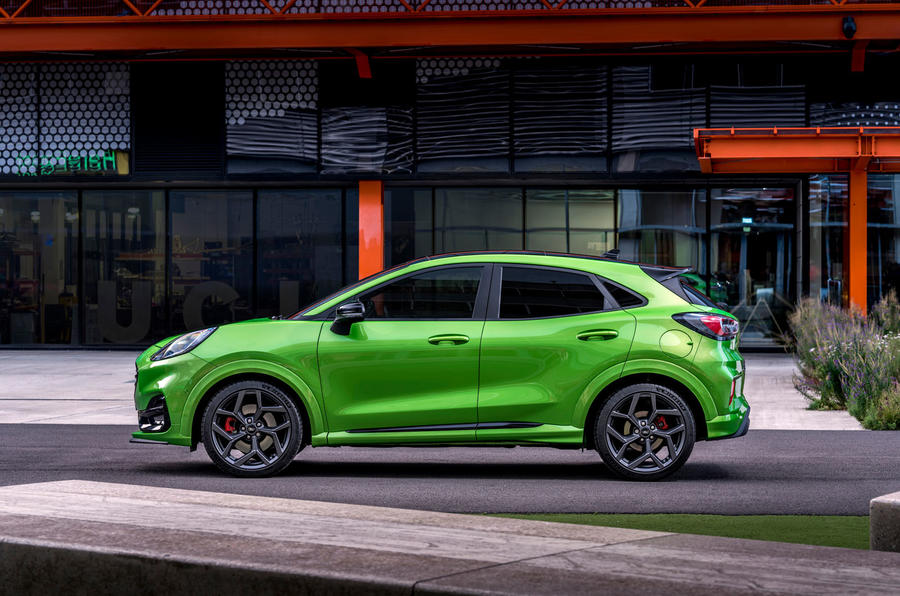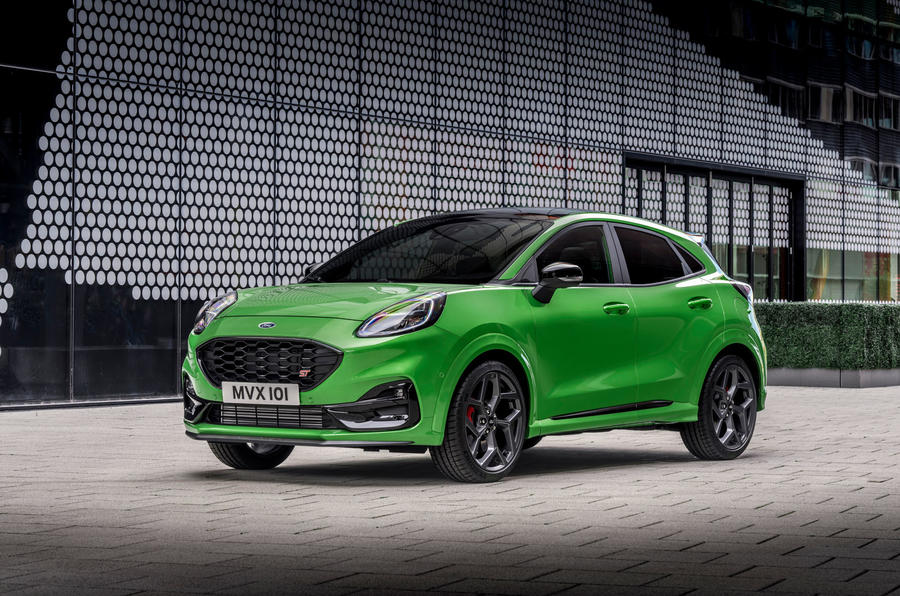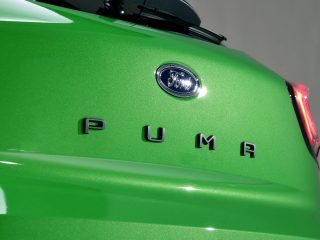Ford lifts the sheet off its all-new Ford Puma ST performance crossover.
Ford has bolstered its lineup of performance models with the addition of the Puma ST, the brand’s first mainstream Australian-market crossover SUV to gain a dedicated performance range-topper.
Priced from about $40k in Europe,, the hot Puma is the fourth entry into the ST range, joining similarly conceived versions of the Focus hatchback( and wagon overseas) and Fiesta hot hatch, and is significantly reworked from the standard Puma that went on sale earlier this year.
The mild-hybrid 1.0-litre three-cylinder turbo petrol engine has been swapped out for the 1.5-litre turbo unit used in the Fiesta ST. Power output is unchanged at 147kW – 34kW more than made by the most potent Puma currently available. However, torque has been boosted to 320Nm, giving more linear acceleration and enabling the larger and 96kg-heavier Puma ST to match the Fiesta ST’s 0-100km/h time of 6.7sec.
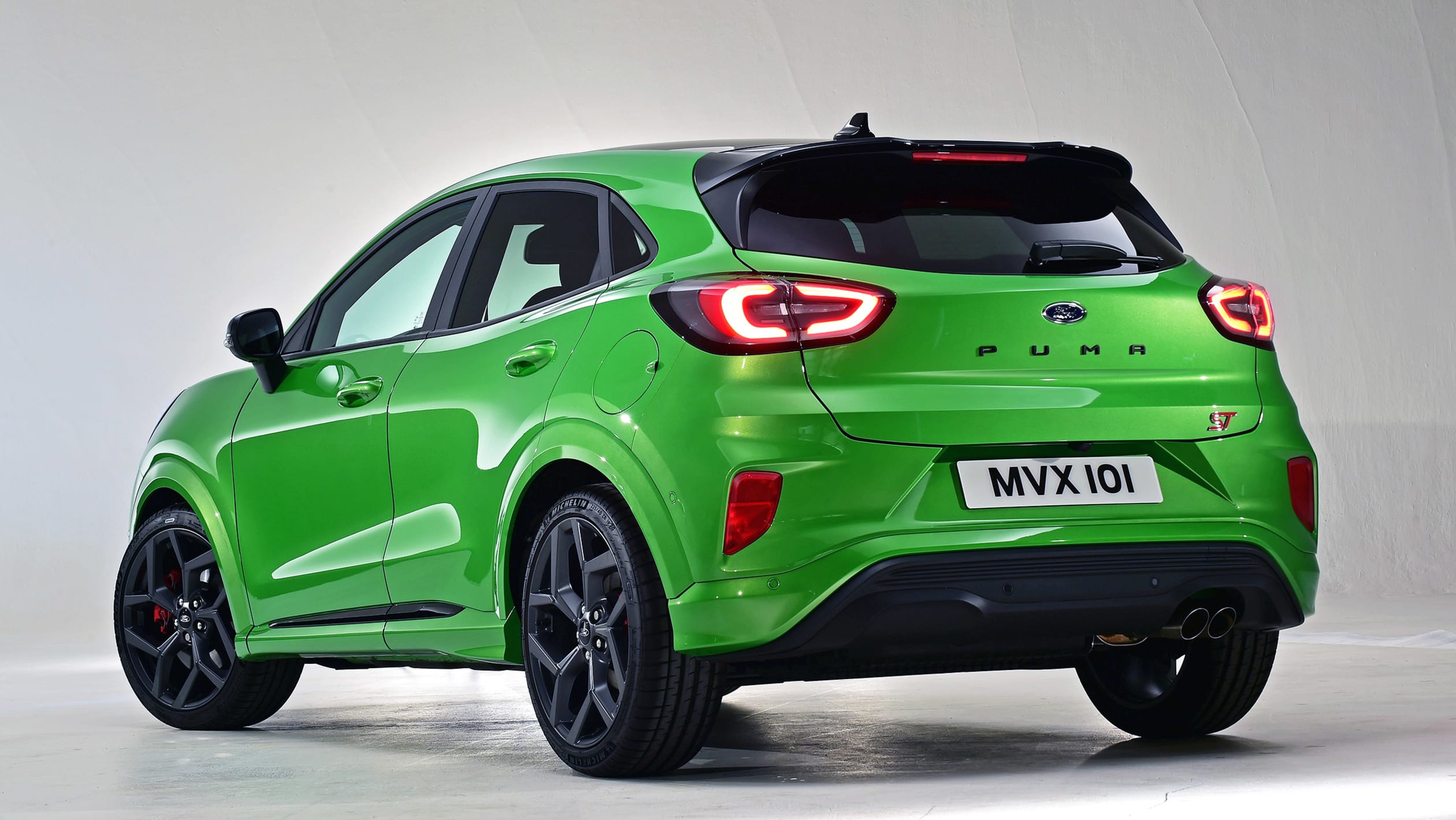
As in the Fiesta ST, the all-aluminium engine sends its reserves to the front axle via a six-speed manual gearbox. It’s equipped with a radial-axial turbocharger and integrated exhaust manifold for reduced lag, twin-independent variable cam timing and roll-restricting engine mounts designed to improve refinement and cornering performance.
While the Puma ST goes without the standard Puma’s mild-hybrid system, cylinder deactivation functionality can shut down an unneeded cylinder in as little as 14 milliseconds, helping to save fuel when coasting or cruising.
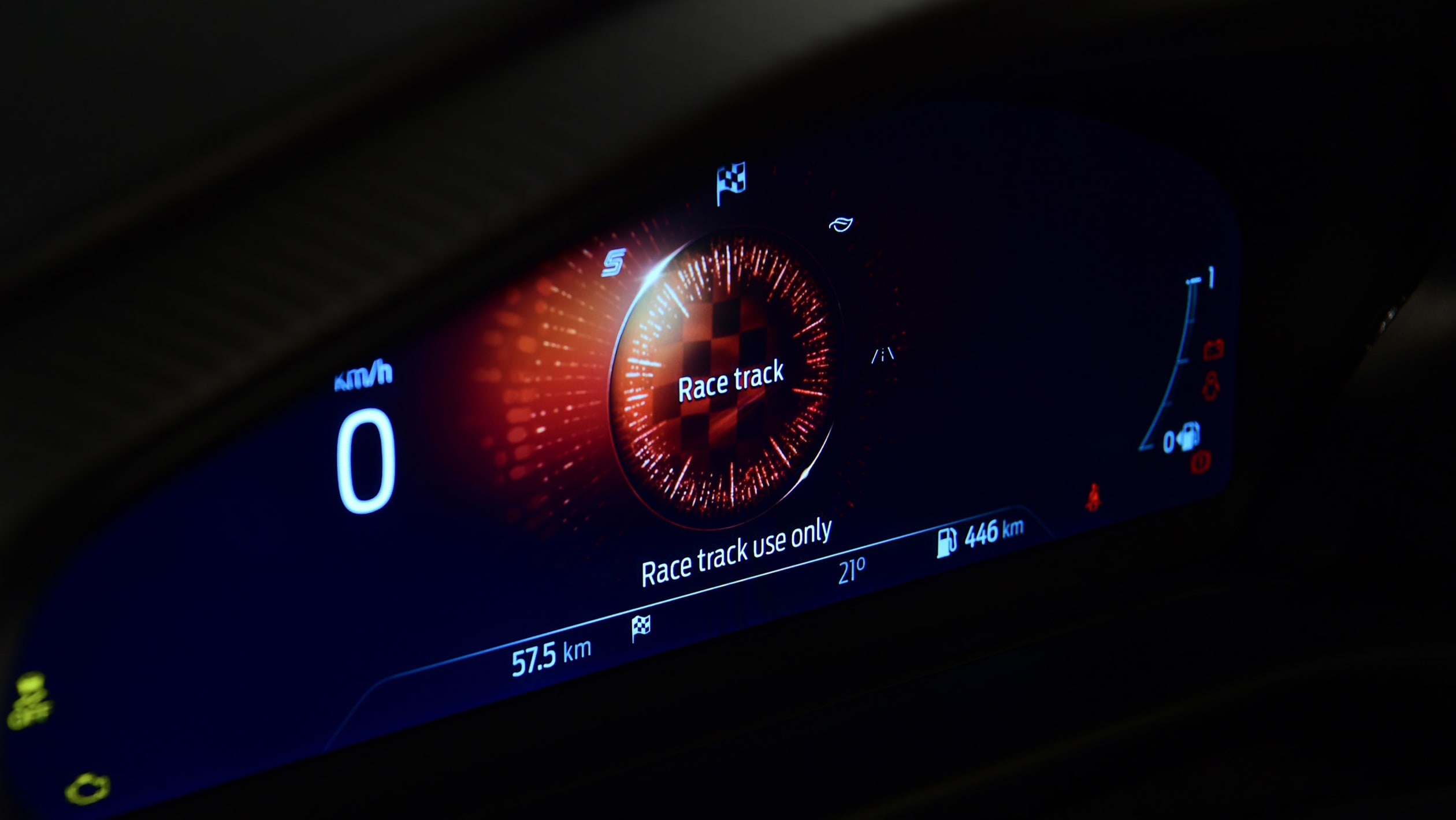
The Fiesta ST’s active exhaust valve technology also features, but it has been tuned to offer a “more composed cruising experience”, meaning the Puma ST is roughly one decibel quieter.
In what Ford is calling a first for the hot crossover segment, the Puma ST also gains a mechanical limited-slip differential, which works alongside a torque-vectoring system to minimise understeer and optimise grip. Further dynamic upgrades come in the form of new ‘force-vectoring springs’ that improve lateral stiffness at the rear, a rear twist beam that’s 50% stiffer than on the standard car and new anti-roll bars at both ends.
The steering has been uprated, too, making it nearly 25 per cent quicker than on the standard Puma, while the front brake discs are 17 per cent larger for improved stopping performance.
Like the standard Puma, the Puma ST offers Normal, Eco and Sport driving modes, but it swaps the Slippery and Trail functions for a hardcore Track mode, in which the traction control is disabled, the stability control does minimal intervention and all systems are tuned for “the fastest possible lap times” and “the purest driving experience”. An optional performance pack in European markets brings a launch control function that improves response off the line and comes with its own dedicated graphical display in the instrument cluster.
Like its Focus and Fiesta siblings, the Puma ST features only subtle visual clues to its performance aspirations. At the front, there’s a new front splitter that bears the branding of the Ford Performance division and is said to improve front-end downforce by almost 80%, plus a revised lower grille that improves cooling.
The rear end gains a new colour-contrasting diffuser that houses twin tailpipes, and the package is rounded off with a set of bespoke 19in alloy wheels wrapped in specially developed Michelin Pilot Sport 4S performance tyres. The roof, grille, side trims, wing mirrors and roof spoiler of the Puma ST are all finished in gloss-black as standard, while the body can be painted in a new, model-exclusive Mean Green shade.
The interior is largely familiar from the standard Puma, but ST-branded Recaro sports seats in the front, bespoke treadplates, a flat-bottomed steering wheel and an ST gearknob set it apart. A wireless smartphone charger, heated windscreen, front and rear parking sensors and smartphone mirroring are all equipped as standard.
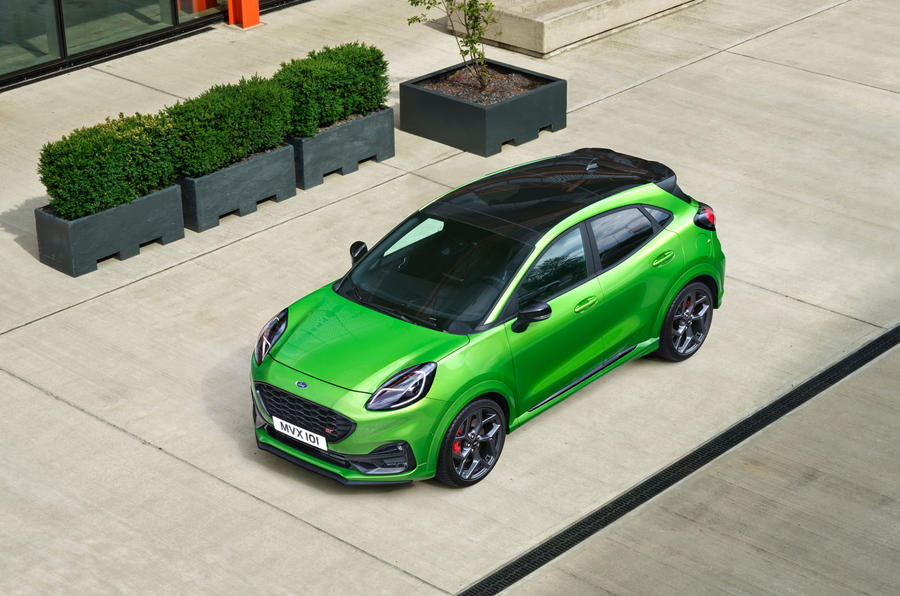
Modifications to the rear suspension system haven’t affected the Puma’s trademark Megabox storage cubby, which still offers 80 litres of hidden space under the boot floor.
Ford Australia has not yet confirmed and announced any plans for the model.
What next for Ford Performance?
Ford’s performance offering now comprises hot versions of the Fiesta, Focus and Puma alongside 2.3-litre and 5.0-litre versions of the Mustang and the hardcore Ranger Raptor ute.
We know there won’t be a RS version of the Focus, due to emissions concerns, and a Kuga ST is extremely unlikely, but that’s not to say the fast Ford is an endangered species.
The brand’s European design chief, Murat Gueler, previously told Automotive Daily sources the new Mustang Mach-E SUV could spawn a range of electric performance cars under the Mustang banner. “The Mustang and the Porsche 911 are the most famous sports cars on the planet,” he said. “Mustang is a big nameplate, and it’s about time we applied electrification to it.”
As for combustion cars, we will likely see facelifted versions of the Fiesta ST and Focus ST following updates to the standard models, while the Mustang itself is set to make the landmark shift to hybridised V8 power in 2022. It will remain on sale in Europe following the global success of the current S550 generation.
Felix Page
